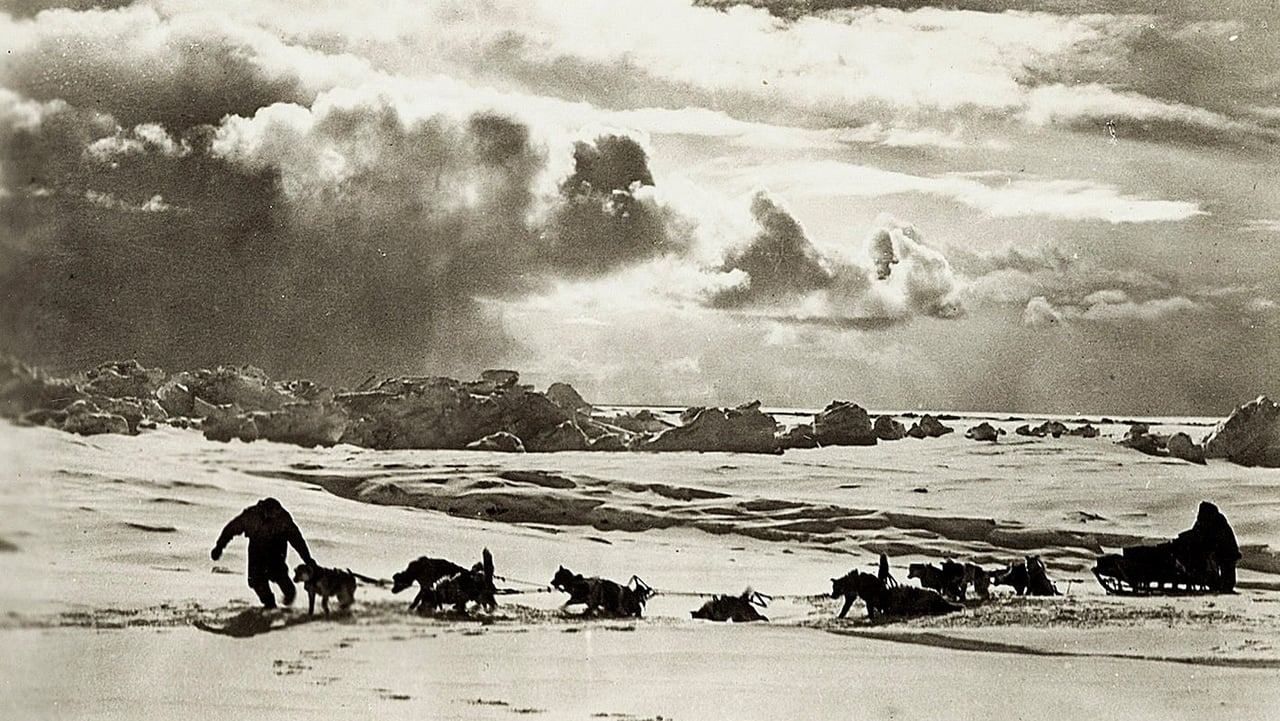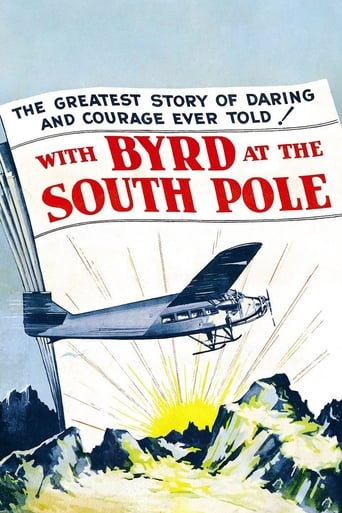

Narrated by Floyd Gibbons. Directed and photographed by JOSEPH T. RUCKER and WILLARD VAN DER VEER. Polar flight commentary narrated by Floyd Gibbons. Titles: Julian Johnson. Film editor: Emanuel Cohen. Music score: Manny Baer. Song, "Back Home", by Irving Kahal, Sammy Fain and Pierre Norman.Copyright 12 July 1930 by Paramount Publix Corp. New York opening at the Rialto, 19 June 1930. U.S. release: 28 June 1930. Sydney release at the Prince Edward, 24 October 1930 (ran 2 weeks). 8 reels. 7,411 feet. 82 minutes.SYNOPSIS: Documentary of Admiral Byrd's 1928-1930 polar expedition.NOTES: Academy Award for Cinematography (defeating one of the most impressive line-ups in the entire history of this Award: Arthur Edeson's All Quiet on the Western Front; William Daniels' Anna Christie, Tony Gaudio and Harry Perry's Hell's Angels and Victor Milner's The Love Parade).Voted into 7th position, in The Film Daily annual poll of U.S. film critics.COMMENT: A meticulous but slow-moving account of Byrd's expedition. True, the photography, doubtless executed under terrible conditions, has its moments of grandeur, but the film as a whole is too long, too repetitive, too static, too familiar to hold the interest of a present-day audience for 82 minutes.
... View MoreWith Byrd at the South Pole (1930) *** (out of 4) This documentary picked up a Best Cinematography Oscar and rightfully so as some of the shots are just downright breathtaking. The documentary covers the year-long journey of Rear Admiral Richard Byrd as he tracks down to the South Pole where he attempts to become the first person to fly over it. The documentary picks up as the ship leaves New York and we pretty much see their not so good life for the next year as they struggle to build up their shelters as well as having to deal with the low temperatures and of course actually building the plane to try and make it fly. I think history buffs are certainly going to get a kick out of seeing this footage as there's no question that it's pretty remarkable getting to see this historic event. The cinematography really puts you right there as there are some terrific shots of the wildlife and some footage showing how dangerous everything is. Just take a look at some of the shots during the two blizzards that are shown and you're really amazed that no one was killed. There's also quite a bit of humor added in the title cards (the film is silent) in regards to the low temperatures and there's a funny sequence where we see some spring cleaning and we get to see how they get a hot bath. The Aeriel footage is another major plus. The film starts off with a talking sequence with Byrd delivering a speech about his journey. This is probably the worst sequence because of how badly he struggles to read the cue cards. His eyes are constantly looking over to the cards and even worse is how he has to break sentences up to look over and see where to pick up again. Still, the actual images is what makes this film so special and worth viewing.
... View MoreOscar winning documentary on Byrd at the Antarctic and his attempt to be the first to fly over it.This beautifully shot record of what Byrd had to do to be the first man to fly over the South Pole is the type of film that sucks you in and hold you for its entire running time. If you want to know what it was like to be one of the first people to explore the bottom of the world this is for you. To be certain others were there first Roald Amundsen, Scott and Shackleton were all there first, but Byrd was still there when there were no permanent facilities and a trip to the ice was a years long adventure. This is amazing stuff (even if some of it seems staged). If there is any real flaw its that the flight to the Pole is almost anti-climatic when compared with just trying to survive.It should noted that the film is mostly silent. Sound film was really just taking off when the expedition was taking off, and even so the sound equipment would never have passed the weight restrictions. What sound there is comes from an introduction by Byrd, sound effects, and some narration during the actual flight.Recommended. (More so if you've seen the footage of Ernest Shackleton and his ill fated trip since this adds to your knowledge of what it must have been like for them as well)
... View MoreA classic documentary in glorious black and white, the film is mostly silent, with a musical score added. There is a sound introduction by Byrd himself and a narrator describes the section showing the actual flight over the South Pole (though his narration is hurried). The film is beautifully photographed and won the Academy Award for cinematography in 1930. Helpfully, the print that I watched on Canadian TV was clear and crisp, making the film a visual treat to watch. I highly recommend this film over any newer versions of Byrd's story which would intercut the vintage film clips with modern material. This version gives a great feel for the immensity of the original expedition, with tidbits both momentous and minor.
... View More